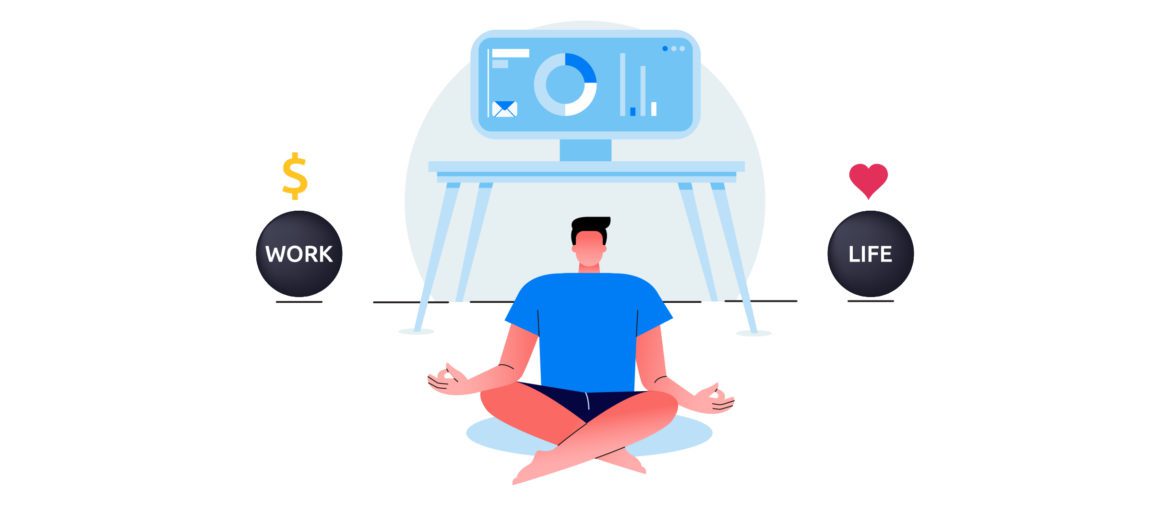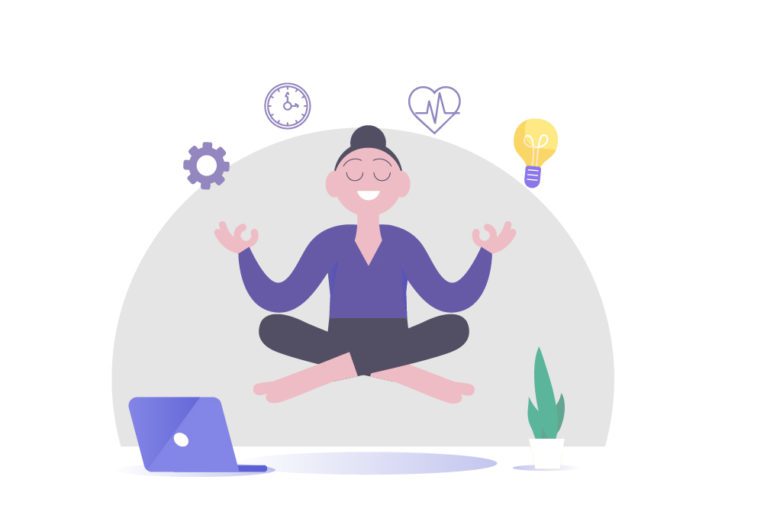The covid-19 pandemic has changed our world like nothing else. The way we live, the way we commute, the way we work, everything has changed. So it is no surprise that the way we perceive work life balance is also changed. These work life balance statistics help us have a clear perspective towards this change and how we can benefit from a better work life balance.
Work life balance statistics after Covid

Here are some work life balance statistics that show us how the pandemic has affected our life.
- 65% of people admit that now that they’re working remotely, they’re working for longer hours than before the pandemic.
- 7 in 10 workers working from home during COVID-19 are struggling to maintain a healthy work-life balance.
- 56% of people say they’re more stressed about work than ever before when working from home during COVID-19.
- The average workday lengthened by 48.5 minutes following stay-at-home orders and lockdowns.
- 30% of people say they start and finish work earlier when working remotely during quarantine.
- 75% of people who work remotely do so because they say they have fewer distractions.
- 86% of people feel that working remotely reduces their stress levels.
- 86% of people say that flexible or telecommuting jobs help them save money.
- 97% of people say a job with flexibility has a huge improvement or positive impact on their overall quality of life.
- 51% of employees are experiencing burnout symptoms while working from home.
- 40% of remote workers say unplugging after hours is the biggest challenge of working remotely.
- 67% of people working remotely feel pressure to be available at all hours of the day.
Benefits of a work life balance
Now that we know the effects of work life balance statistics on our daily life, here are its various benefits.
1. Work life balance benefits productivity
Better focus on work leads to an increase in productivity. The quality and even quantity of work done is better and greater as one gets rid of distractions and focuses better. Managing our tasks better leads to better productivity and in turn to better efficiency. Lesser time is now taken to do the same amount of work as we saw with the work life balance statistics.
2. Better time management
With good management of responsibilities, time management also improves. Time management importance comes into the picture when all the time wasted in checking up on and getting swept away in unnecessary tasks is now utilized to work and focus better. Time saved is time earned for more as we see in work life balance statistics.
3. Better efficiency using work life balance statistics
With more time and better focus at hand, the efficiency of work also increases. With higher productivity at work, one gets more work done in much less time allowing more time in hand. Increased efficiency is hence one of the points in the work life balance statistics too. With better efficiency, one’s quality of work increases. This ensures growth in one’s career as well as one’s personal life.
4. Work life balance benefits lead to quality work
Focus and concentration on a particular task is the basis of achieving work life balance. This ensures that one pays optimum attention to the task at hand. All factors that can lower productivity, like distractions, disturbances, shallow work, etc, are kept at bay. Thus this ensures a better quality of work as better priority management acts as a tool for productivity.
5. Work life balance benefits our health
In this fast-paced corporate life, work is on our mind 24*7. With the practice of shallow work, this never-ending list keeps on adding up. Once a task is over, we immediately jump to another task, only to be distracted by something else. This cycle over and over is what is responsible for exhaustion and lowered productivity. Understanding work life balance statistics can be our solution against this.
Maintaining work and life balance ensures that a time and schedule is followed when it comes to task execution. Thus we are at liberty to finish the task at hand much faster and increase time efficiency and improve work life balance statistics. This also lets us unplug from work as we focus on ourselves and our lives outside work.
6. Work life balance benefits you in the long run
Focusing on getting work done and staying busy should not be the priorities in a company as is seen in the work life balance statistics. If proper priorities are not set, we tend to fill our time up with shallow work like email management and menial tasks. Thus we eventually are left with no time and patience left for important tasks. In order to grow in your workplace, working at a deeper level is necessary.
Work life balance statistics to motivate you to live better
The above work life balance statistics help us realize the various factors that have led to an increase and to a decrease in our quest for a balanced life. Work life balance benefits also motivate us to understand work life balance tips and put them to practice. These efforts reward us by helping us achieve better productivity and better mental space.
FAQs
1. 65% of people admit that now that they’re working remotely, they’re working for longer hours than before the pandemic.
2. 7 in 10 workers working from home during COVID-19 are struggling to maintain a healthy work-life balance.
3. 56% of people say they’re more stressed about work than ever before when working from home during COVID-19.
4. The average workday lengthened by 48.5 minutes following stay-at-home orders and lockdowns.
An ideal work life balance is the one where you can allot time to your work and career as well as to your personal family and friends.
Netherlands has the best work life balance, followed by Denmark, France and Spain.
1. Program analyst
2. User experience designer
3. Front end developer
4. Software engineer
5. Strategy manager



